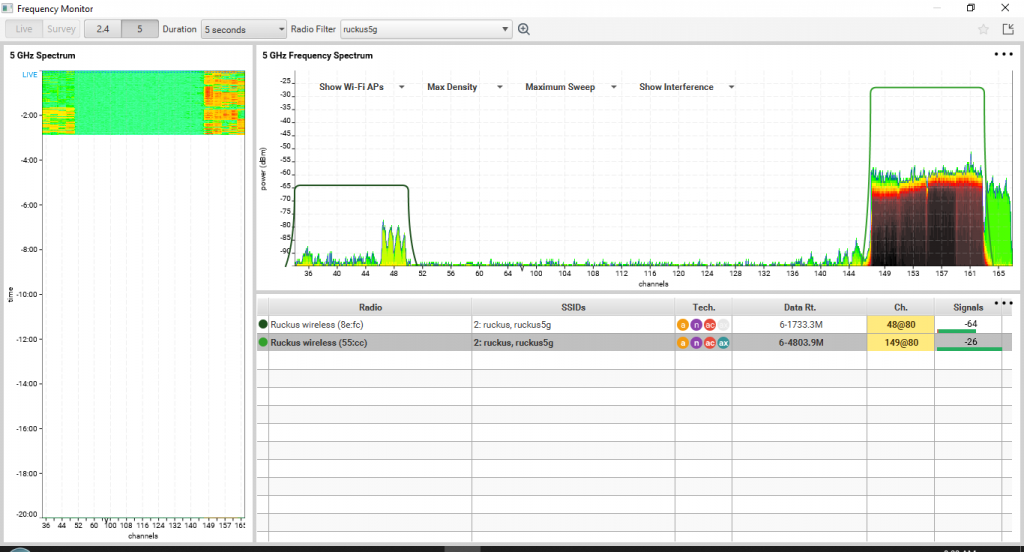

WiFi Analyzer and WiFi Monitor are solid choices offering similar features. WiFi Scout lacks some advanced features, but it does offer two features that could be useful in certain situations: it creates separate network lists for the 2.4- and 5-GHz bands and it keeps out-of-range access points on the list. If you’re looking for a free app, consider WiFi Analyzer, WiFi Monitor, and WiFi Scout. Though most of the apps will recognize “hidden” SSIDs, they cannot reveal the actual SSIDs, like some other traditional Windows applications. Channel-width details are also not provided, so you won’t see accurate channel usage graphs and interference analysis, if there are access points utilizing channel widths greater than the legacy 20MHz. For example, these apps are not able to detect exactly what access point you’re connected to if there are other access points with the same SSID. Keep in mind, the Wi-Fi features that developers can utilize in the Universal Windows Platform are still pretty limited. Now we’re reviewing apps, published as Universal Windows Platform apps on the Microsoft Store, which can run on Windows 10 PCs, tablets and phones. These apps allow you to analyze the wireless access points and channels on the 2.4 and 5GHz bands in your network. We’ve reviewed Wi-Fi stumbler and surveying apps that run on Android, Windows, and Mac OS X devices.


 0 kommentar(er)
0 kommentar(er)
